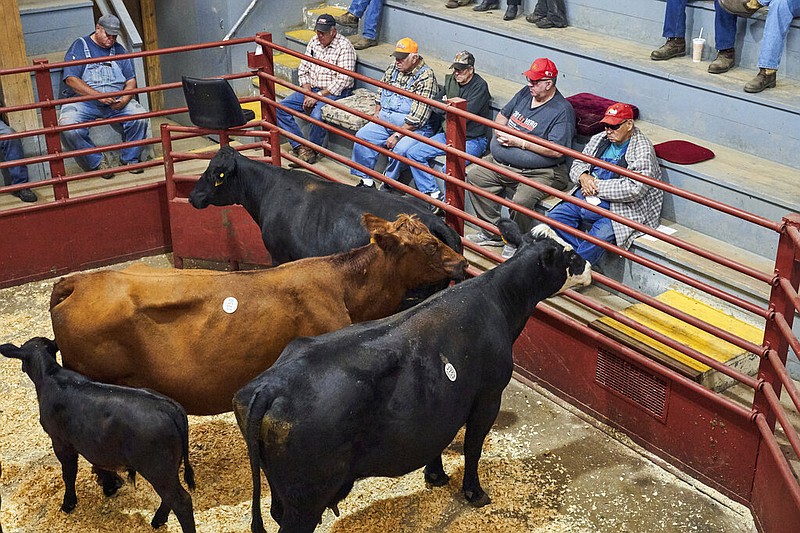Livestock producers should take advantage of any slack time during early summer to plan their fall marketing strategy, said David Fernandez, Extension livestock specialist and interim dean of Graduate Studies and Continuing Education for the University of Arkansas at Pine Bluff.
Producers have a variety of options. Each has its advantages and disadvantages.
Most familiar and easily accessible is the livestock auction. Auctions have regular sales, and market reports give an idea of how much to expect. But prices can differ weekly depending upon the number of buyers present, the number of animals to be sold and the size of the animals the market demands at that time, Fernandez said. Animal quality is often of secondary importance.
Fernandez said some small farmers may prefer to sell their animals directly to the public through on-farm sales. Producers who do so should be prepared to negotiate directly with the end consumer. Producers will capture more of the retail price of the meat, but they must have the type of animal the customer wants when they want it.
He warns that producers should consider biosecurity. Producers do not know how many farms the customer has visited or what animal diseases they have been exposed to. Keep visitors out of areas where breeding animals are kept, and only allow customers access to animals that are for sale.
"Sellers must also have cash on hand to make change and a secure place to keep cash when paid," he said.
Farmers markets provide the opportunity to capture the retail price of producers' meat and even charge a premium price. Farmers markets allow producers to develop customer trust and loyalty, which can be a source of reliable sales year after year. However, producers must be able to slaughter and process the animals under U.S. Department of Agriculture (USDA) inspection guidelines. They must be available on market days, and there is travel to and from the markets to consider, Fernandez said. Producers will need cash to make change, but some farmers markets can process credit cards.
Local retailers, such as ethnic grocery stores or Halal or Kosher markets, and restaurants may be an option. Producers must have the type and quantity of animals needed either year-round or during specific holidays. Animals must be slaughtered and processed under USDA inspection. Ethnic grocers are often networked to similar retailers nearby, which can expand markets.
Club kids and lambs are popular for 4-H or Future Farmers of America (FFA) projects. Kids and lambs are relatively inexpensive compared to steers. They are small and easy for children to work with, less expensive to feed and easier to sell than steers after the show. Producers must understand judges' preferences, however, because customers want to win, Fernandez said.
Another option is raising breeding stock for other producers. This requires a high degree of management and marketing skills. It has a high start-up cost because the producer needs to purchase high-quality breeding stock.
"Sales can be subject to industry fads," Fernandez said. "You must determine which traits are economically important and select for them. Detailed record keeping is required. Raising breeding stock provides opportunities for additional sales of semen and embryos in addition to rams, bucks, ewes and does."
For more information on livestock marketing strategies, contact David Fernandez at (870) 575-8316 or fernandezd@uapb.edu.
Carol Sanders is a writer/editor with the UAPB School of Agriculture, Fisheries and Human Sciences.
